Are you noticing the leaves on your hydrangea plants turning yellow? Don’t worry, this is a common issue that can be remedied with minimal effort. This blog post will explain why your hydrangea’s leaves are turning yellow and provide effective solutions to solve the problem.With just a few simple steps, you can restore your beloved hydrangeas back to their former glory so they will remain healthy for years to come!
What Is Hydrangea?
Hydrangea is a flowering shrub that produces an abundance of colorful blooms throughout the summer months. The attractive, fluffy flowers can be found in different shades of pink, blue and white. Hydrangeas are native to North America and Asia but are widely cultivated across the world for their beauty and hardiness.
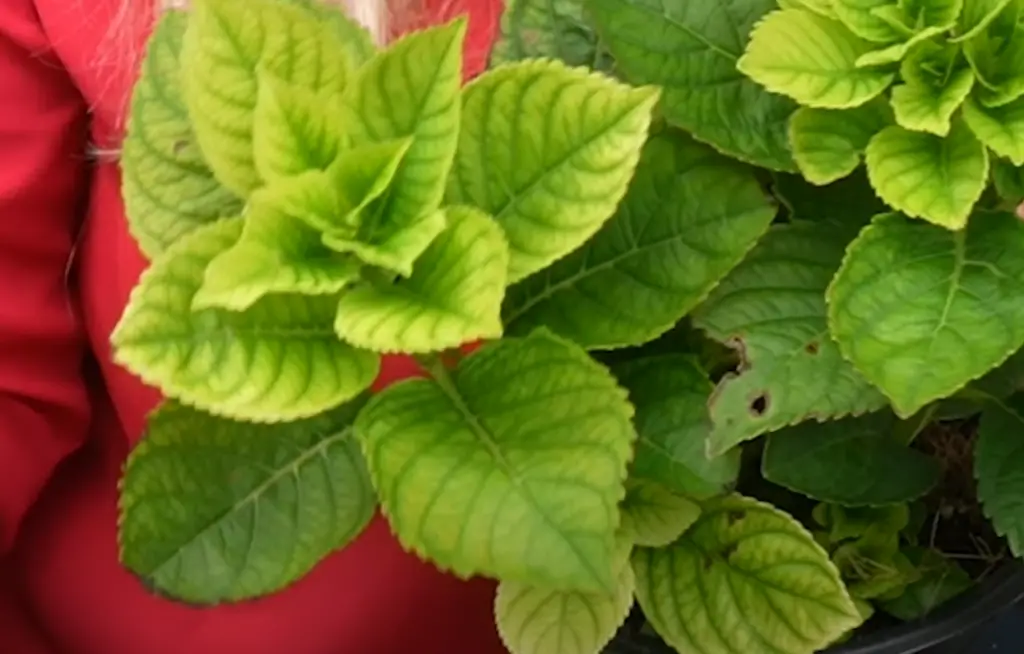
The plant also has large leaves which can be used to add texture and interest to garden beds or flower arrangements. However, sometimes these leaves may turn yellow without any visible cause. It is important to understand what might have caused the discoloration so it can be rectified accordingly.
Why are Hydrangea Leaves Turning Yellow?
Too Much or Too Little Watering
Yellow leaves can be caused by either too much or too little water.
Alternatively, if you’re not providing enough water for the plant, then it won’t have access to the resources necessary for healthy growth. [1]Poor Soil Quality
Low-quality soil can be a major culprit behind yellowing leaves. Hydrangeas need nutrient-rich, well-draining soil in order to thrive, so make sure you’re using the right type of soil and that it’s regularly fertilized. Additionally, watch out for pH levels—hydrangeas prefer slightly acidic soils.
Too Much Sun Exposure
Just like all other plants, hydrangeas need proper sun exposure. The excessive exposure to sunlight can lead to yellowing of leaves as a result of heat stress and lack of hydration. If your hydrangea is in a sunny location, try moving it to an area with more shade.
Pests and Diseases
Hydrangea leaves can also turn yellow due to pests or diseases. Common culprits include aphids, thrips, and spider mites. Additionally, fungal infections like powdery mildew can cause the leaves to discolor.
Frost Damage
If you live in a region that experiences harsh winter temperatures, then frost is likely the cause of your yellowing hydrangea leaves. Frost damage can be identified by spotting cracks and brown patches on the leaves, and in extreme cases, total dieback of the plant.
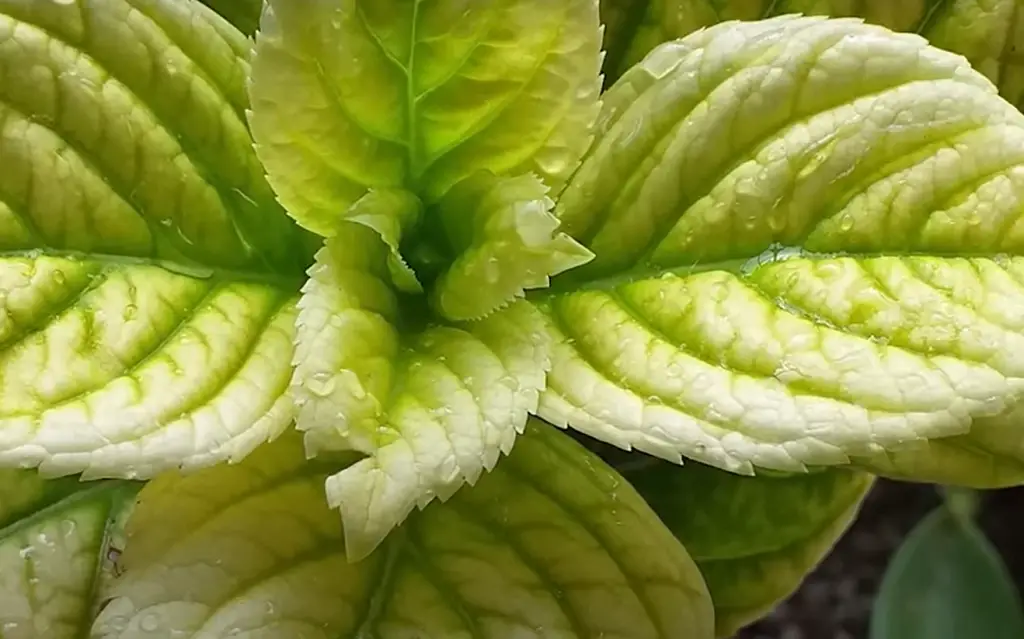
To prevent frost damage, always cover your hydrangea with a burlap or blanket when freezing temperatures are expected. Additionally, it’s best to add an extra layer of mulch around the base of plants for insulation against cold weather conditions. [2]
Nutrient Deficiencies
Inadequate soil nutrition can also be the cause of yellowing hydrangea leaves.
If necessary, amend the soil with sulfur or compost to bring down the pH level. It is also important to ensure that your plant has adequate access to nitrogen, phosphorus and potassium (the three most essential nutrients for plant health) by applying a balanced slow-release fertilizer or organic matter in early spring.Pruning Stress
If you recently pruned your hydrangea, the yellowing of the leaves is likely due to pruning shock. Pruning shocks plants, causing them to drop their leaves and go into a dormant state until they can adjust and acclimate to their new form. To prevent this from happening, always prune your hydrangea in late fall or early winter when it’s not actively growing. Additionally, make sure that you only remove dead and diseased branches, as these are the only branches that should be pruned back.
How to Fix Yellowing Hydrangea Leaves
Adjust Your Watering Habits
When hydrangea leaves turn yellow, it’s often caused by overwatering or underwatering. To fix the problem, adjust your watering habits to make sure you are providing enough water but not too much. Water deeply and infrequently; this will ensure that the entire root system is being reached with water while avoiding overly soggy soil.
Improve Soil Quality
Poor soil quality can also cause hydrangea leaves to turn yellow. Improve the soil by adding compost before and after planting, as well as annually thereafter. Compost will help improve drainage, aeration, and nutrient availability in the soil; all of which are important for healthy plant growth. [3]
Reduce Sun Exposure
Hydrangeas can get too much of a good thing when exposed to too much sun. If you notice the leaves turning yellow, try moving them to an area with more shade. This may help turn the leaves back to their healthy green color. When planting hydrangeas, be sure to consider where they will receive plenty of shade during periods of intense sunlight. Additionally, it is best to avoid pruning or trimming plants in full sun as this can weaken and damage the plant’s foliage leading to further discoloration.
Identify and Treat Pests and Diseases
Sometimes a hydrangea’s leaves will turn yellow due to pests and diseases. Identifying the type of pest or disease is essential for determining the right course of action.
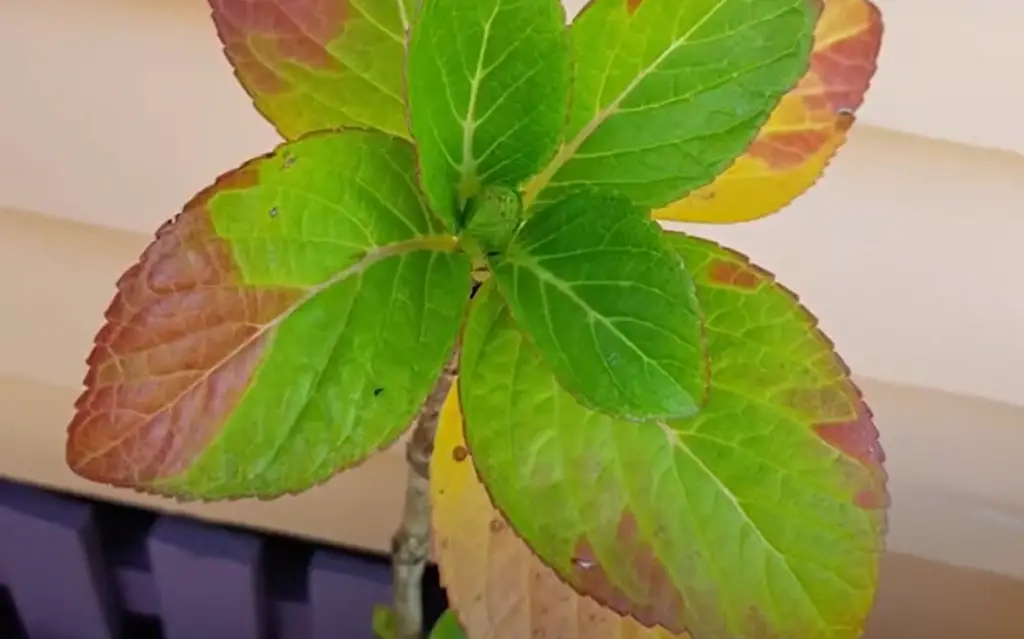
Treating the plant with an appropriate insecticide or fungicide can help restore the vibrancy of its leaves. If necessary, seek advice from your local nursery or garden center for information on treatment options.
Insulate Your Hydrangeas from Frost
Hydrangeas can be very sensitive to frost and cooler temperatures. If the leaves start to yellow, you may need to take steps to protect your plants from the cold. Mulching around the base of the plant or covering it with a cloth at night can help insulate it during periods of extreme weather. Taking these precautions will ensure your hydrangeas remain healthy and vibrant throughout winter months.
Use a Fertilizer with the Right Nutrients
If your hydrangeas are not getting the right nutrients, their leaves may turn yellow. Fertilizing with a balanced fertilizer will help ensure that plants receive adequate levels of nitrogen, phosphorus and potassium. It is important to follow the directions on the fertilizer label in order to achieve the best results. Additionally, applying a slow-release or liquid fertilizer can also be beneficial for keeping your hydrangeas healthy and green.
By taking these steps, you can help keep your hydrangea’s lush foliage looking beautiful and healthy all year round! With proper care and attention, your hydrangeas will remain vibrant and full of life for years to come.
How to Maintain Hydrangeas?
Hydrangeas are beautiful flowering plants that can be a great addition to any garden. However, if not cared for properly, they can suffer from yellowing leaves and other problems. To keep your hydrangeas healthy and vibrant, it’s important to follow the proper maintenance steps.
The first thing you should do when caring for hydrangeas is to prune them regularly. Pruning will help shape the plant and remove any dead or diseased wood. It also helps ensure that the flowers receive adequate sunlight so they can bloom as intended. When pruning, be sure to use sharp pruners and cut at an angle so that the new growth will have plenty of room to grow in freely without crowding the other plants.
Next, hydrangeas need to be watered regularly. Depending on your climate and soil type, you may need to water them more or less often. However, in most cases it’s best to water when the top two inches of soil is dry. You should also make sure to fertilize periodically with a nitrogen fertilizer to encourage healthy growth.
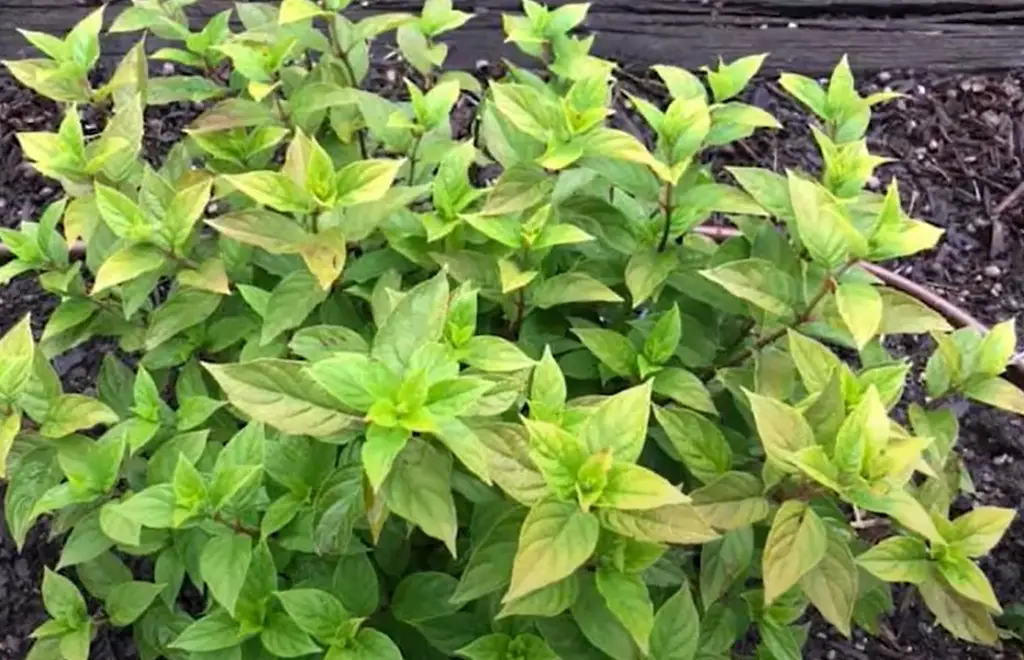
Finally, mulching can help protect your hydrangeas from extreme temperatures and keep their roots at an even temperature throughout the year. It will also help keep weeds away and retain moisture so that your plant doesn’t suffer from drought stress. Be sure to use organic mulch such as wood chips or compost around the base of your hydrangea.
By following these simple steps, you can keep your hydrangeas healthy and ensure that they don’t suffer from yellowing leaves or other issues. Make sure to prune regularly, water adequately, fertilize occasionally, and use mulch to protect against extreme temperatures and retain moisture. With proper care, your hydrangea will remain vibrant for many years! [4]
Tips for Growing Hydrangeas
Hydrangeas are a beautiful flowering shrub that can add color and texture to any garden. Although they don’t require much maintenance, proper care is essential for keeping them healthy and thriving. Here are some tips for growing hydrangeas:
- Plant in an area with plenty of sunlight. Hydrangeas prefer at least 6 hours of direct or indirect sunlight each day. Be sure to choose an area that has well-draining soil so the roots do not become waterlogged.
- Prune in late winter or early spring to encourage new growth, remove deadwood, and shape the plant as desired. Make sure to use clean pruning tools since disease can easily be spread from plant to plant using contaminated tools.
- Feed your hydrangeas in early spring and again in mid to late summer with a slow-release fertilizer or an organic mulch like compost or manure. Fertilizers that are high in nitrogen can cause the leaves to turn yellow, so be sure to use one that is balanced.
- Water thoroughly at least once a week. Hydrangeas have shallow roots, so they need plenty of water but make sure not to overdo it as too much water can lead to root rot and other diseases.
- Mulching around the base of the plant helps retain moisture throughout the summer months when rainfall is limited. Spread 2 to 3 inches of organic material such as bark chips, grass clippings, or shredded leaves around the base of the plant.
- Watch for any signs of diseases or pests and take action as needed. Common problems include powdery mildew, leaf spots, and scale insects. Treating problems early on with an insecticidal soap or organic pesticide is the best way to keep your hydrangea healthy and happy.
With a little TLC, you can enjoy beautiful blooms from your Hydrangeas all season long! [5]
Is Vinegar Helpful?
Vinegar can be used as a helpful solution in treating yellowing hydrangea leaves. Vinegar’s acidity helps to reduce soil pH, and many gardeners believe that this will help turn the leaves back to their natural green color. To use vinegar on your hydrangeas, mix one-part white vinegar into four parts water and apply the mixture directly onto the soil around the plant. Do this every three-four weeks during the growing season until you see improvement in your plants’ foliage. It is important to note that applying too much vinegar could cause further damage to your hydrangeas, so it’s best to err on the side of caution when using this method.
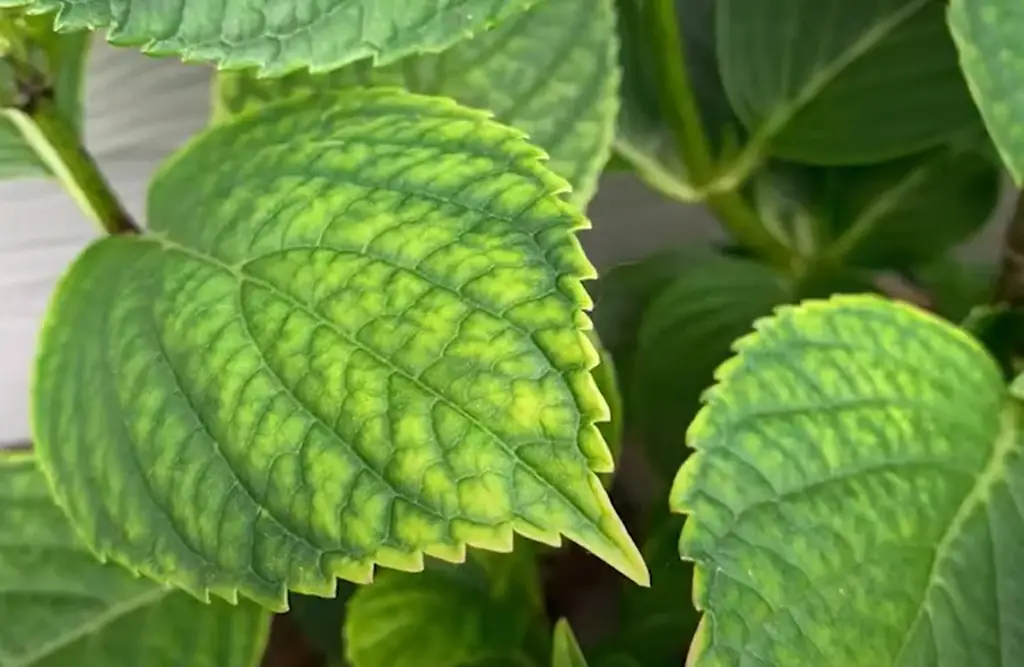
Additionally, if you don’t want to use vinegar, you can also purchase a soil acidifier specifically made for hydrangeas. This type of product is sold at most garden centers and will help to reduce pH levels in the soil without causing any harm to your plants. Follow the instructions on the packaging when using this method, as different products may have slightly varying application requirements.
What You Can Do With Coffee Grounds?
Coffee grounds are a great way to help treat yellowing hydrangea leaves. Coffee grounds are naturally high in nitrogen, which helps to promote healthy foliage growth.
This can help restore the natural green color of your hydrangea’s leaves. It is important to note, however, that coffee grounds should not be over-applied as this can cause nutrient overload and lead to other problems for your plants.Additionally, if you have acidic soil, adding too much coffee may increase acidity levels further and cause further damage. If you do decide to use coffee grounds as a fertilizer for your hydrangea, it is best to start with a small amount and gradually increase the amount as needed. This will help you avoid over-fertilization while still providing your hydrangea with an adequate nitrogen boost.
If you find that your hydrangea’s leaves have not returned to their natural green hue after applying coffee grounds, then it is possible that there are other factors at play. In this case, it may be beneficial to explore other options such as mulching or watering more frequently. Regardless of what steps you take to help restore the health of your hydrangeas, always ensure that proper care and maintenance are being taken in order for them to thrive! [6]
FAQ
Why are my hydrangeas leaves turning yellow?
Hydrangea leaves turning yellow can be caused by a variety of environmental factors, such as too much sun exposure, not enough water, and/or nutrient deficiencies.
It is important to identify the cause of your hydrangeas’ yellowing leaves in order to address the issue properly. In some cases, the yellowing may be due to fungal diseases or pest infestations.
What other signs could indicate that my hydrangeas are in distress?
In addition to yellowing leaves, other signs of distress can include wilting foliage, stunted growth, discolored flowers, and leaf drop. If you notice any of these signs along with yellowed leaves on your hydrangea plants, it is important to take action to address the issue.
What should I do if my hydrangea leaves are turning yellow?
If you notice that your hydrangea plants’ leaves are turning yellow, the first step is to inspect the plant for signs of pests or fungal diseases. If a pest or disease is present, work with an experienced horticulturalist to determine the best treatment plan for your particular situation.
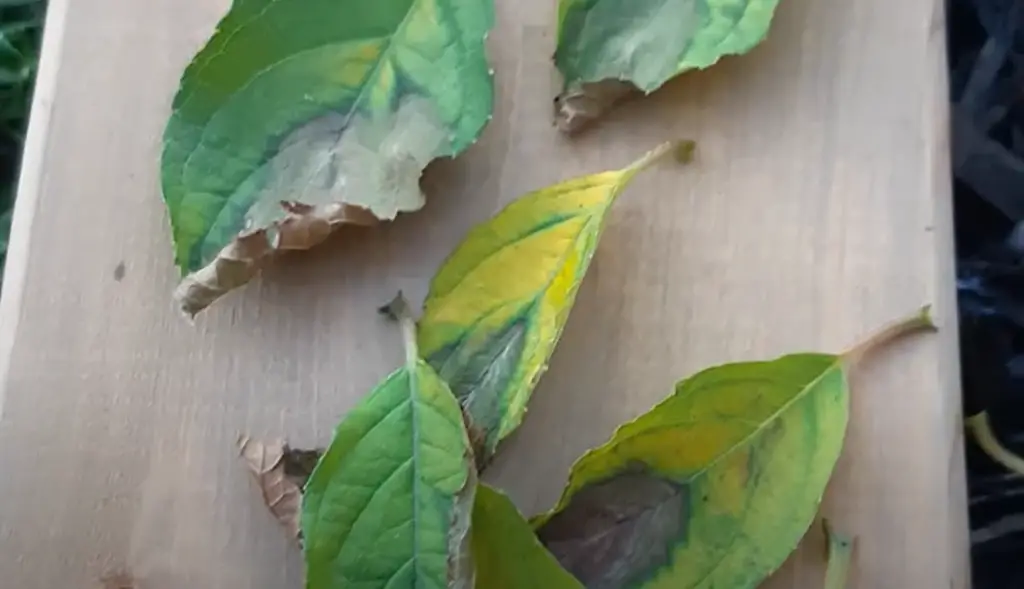
Additionally, make sure that the hydrangeas receive adequate water and nutrients, as well as appropriate amounts of sunlight. If possible, provide some shade during hot summer months in order to protect the plants from scorching sun rays. Finally, prune away any dead or damaged branches and foliage in order to promote healthy growth.
How do you fix chlorosis in hydrangeas?
Chlorosis can be fixed by providing the hydrangeas with soil amendments that are higher in phosphorus and iron. Adding bonemeal, composted manure, or other natural sources of phosphorus to the soil is a great way to increase the level of this essential nutrient. Additionally, applying an iron-rich fertilizer specifically designed for acid-loving plants can help correct chlorosis in these beautiful flowering shrubs. In severe cases, foliar sprays containing micronutrients may need to be applied directly to the foliage in order for them to take effect quickly. While it is important to provide ample nutrients for hydrangea care, it is equally as important not to over fertilize; doing so can lead to additional problems. If you are unsure of how much to use, consult a professional or follow the instructions on the fertilizer package. Additionally, be sure to water your hydrangeas deeply and regularly to ensure that they have adequate moisture for optimal growth. With proper care and attention, your hydrangeas will soon look beautiful again!
Is leftover coffee good for hydrangeas?
Although leftover coffee can be used as fertilizer for hydrangeas, it’s important to use it in moderation. Too much caffeine can be harmful to the sensitive root system of hydrangeas, so it should only be used sparingly. Additionally, because coffee is acidic, using too much could lead to soil that is too acidic for the plant; again, moderation is key. If you choose to use leftover coffee on your hydrangeas, dilute it with an equal amount of water and apply it around the base of the plant once a month. Doing so will help provide necessary nutrients while avoiding overfertilization. With proper care and attention, your hydrangea will soon look beautiful again!
How do I get my hydrangeas to turn back in color?
If your hydrangeas are already turning yellow, there isn’t much you can do to reverse the process. However, there are steps you can take to help prevent further yellowing and ensure that your plants remain healthy and vibrant in the future.
First of all, make sure your hydrangeas have enough water. Hydrangeas need at least one inch of water each week, or about five gallons per plant. If it doesn’t rain enough to meet these needs, supplement with hand-watering using a watering can or garden hose. Make sure not to overwater – if the soil is consistently saturated with water it will cause root rot and other issues that may lead to yellow leaves.
Secondly, make sure the soil pH is within the ideal range for hydrangeas. Different varieties of hydrangea prefer slightly different levels, so you may need to do a soil test first. Generally, a slightly acidic pH between 5.5 and 6.2 is optimal for most types of hydrangeas. If necessary, you can adjust the pH of your soil using products like sulfur or aluminum sulfate – just follow instructions on the package carefully!
Finally, be mindful of where your plants are receiving their light and how much sunlight they’re getting. Hydrangeas thrive in bright but indirect sunlight, meaning they should get at least four hours each day but none directly from the sun’s rays. Too much direct sunlight can cause the leaves to turn yellow as well, so make sure they have enough shade from larger plants or other structures.
Do coffee grounds change the color of hydrangeas?
Using coffee grounds to change the color of hydrangeas is a popular gardening myth. Unfortunately, it’s not true. Coffee grounds contain nitrogen, which aids in plant growth and greening. However, there are no scientific studies that indicate adding coffee grounds will alter the color of hydrangea flowers. So utilizing coffee grounds as fertilizer to help your hydrangeas remain healthy won’t affect their flower color.
How does vinegar help hydrangeas?
Vinegar can be a helpful tool in reviving your hydrangea. The acidity in the vinegar helps reduce alkalinity in the soil, which can help restore nutrient balance and bring back color to yellowing leaves. To apply vinegar to your hydrangea, mix one cup of white vinegar per gallon of water and use it as you would any other fertilizer. Make sure not to over-apply; too much vinegar could have adverse effects on your plant and even kill it. Additionally, don’t rely solely on vinegar for nutrition; supplement with regular fertilizing treatments to ensure optimum health for your hydrangeas.
Useful Video: Why Are My Hydrangea Leaves Turning Yellow?
Conclusion
If your hydrangea leaves are turning yellow, the best way to prevent further damage is to take action. Test the soil and make sure it has a balanced pH level that falls between 5.5 and 6.2 on the pH scale. Make sure you water your hydrangeas regularly and don’t let them dry out completely. If the yellowing persists after making these adjustments, check for common pests or diseases, such as fungal infections or mites. Prune away any dead or diseased branches to promote healthy growth of your plants. Finally, consider using fertilizer specifically formulated for hydrangeas if necessary for additional nutrients and minerals in order to keep your plants looking their best! With proper care and attention, your hydrangeas will be sure to stay healthy and happy.
References:
- https://www.gardenerbasics.com/blog/hydrangea-leaves-turning-yellow
- https://plantura.garden/uk/trees-shrubs/hydrangeas/yellow-leaves-on-hydrangeas
- https://gardenforindoor.com/why-hydrangea-leaves-turning-yellow/
- https://plantcaretoday.com/hydrangea-leaves-turning-yellow.html
- https://plantscraze.com/hydrangea-leaves-turning-yellow/
- https://gardenine.com/hydrangea-leaves-turning-yellow/





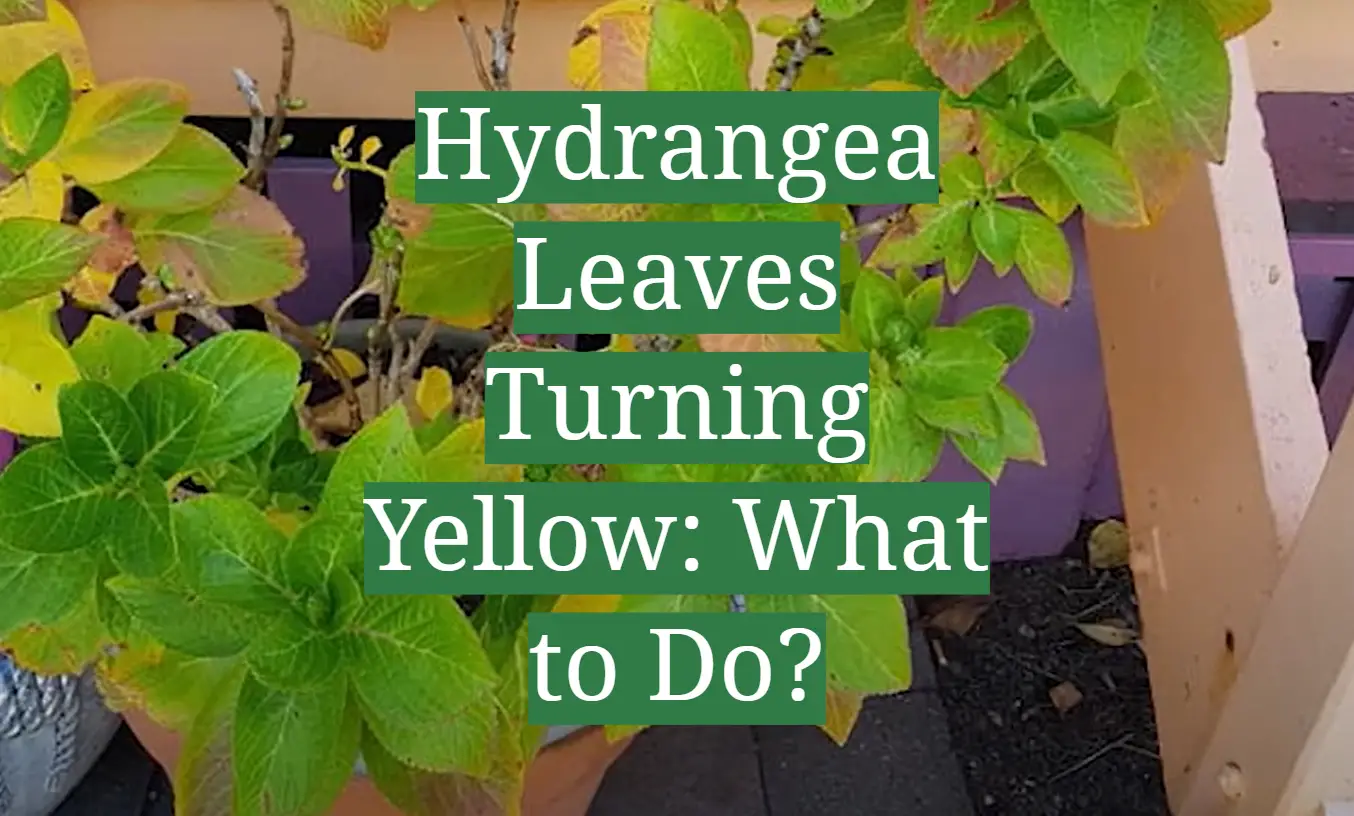




Leave a Reply
View Comments